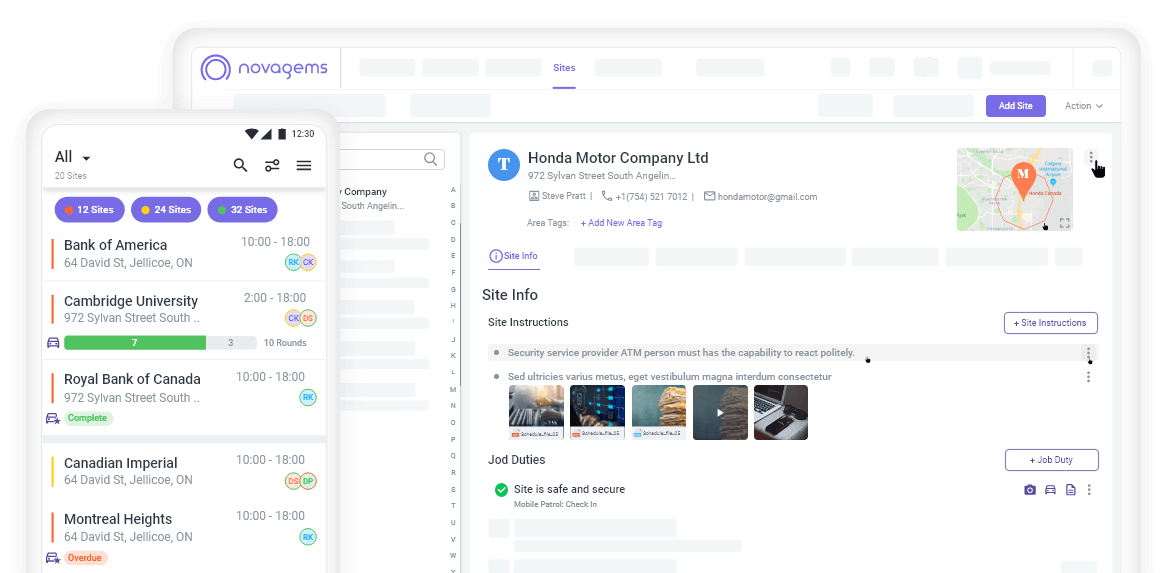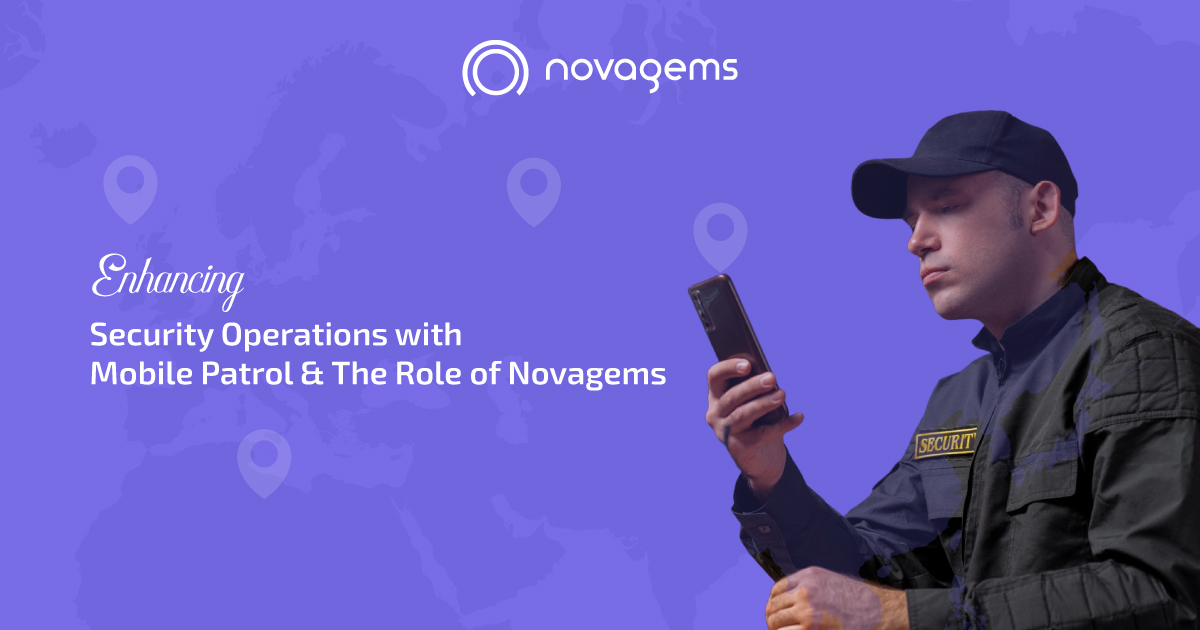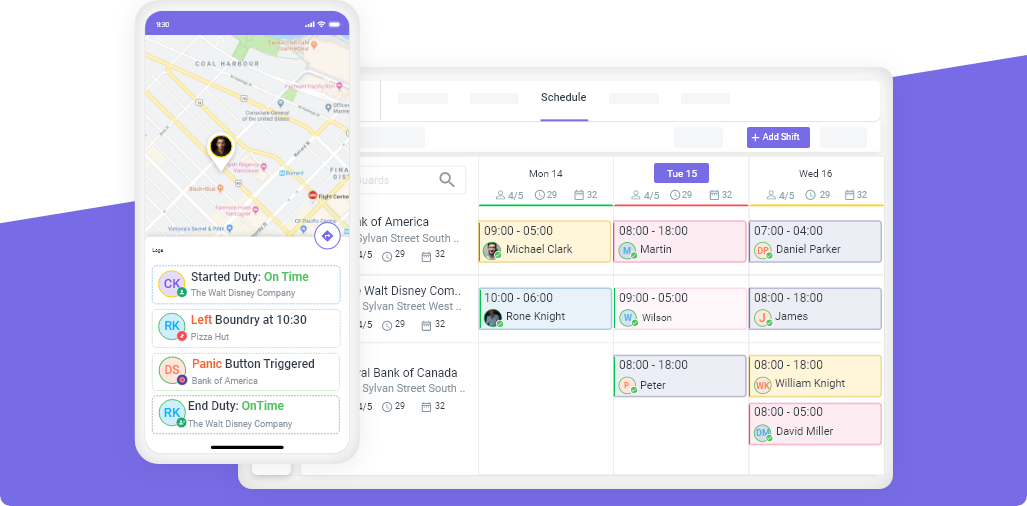Pricing Strategies for Creating Your Hourly Guard Rate
Published on: Wed, Aug 6, 2025
Read in 8 minutes

Setting your security guard hourly rate is one of the most important decisions for any security services provider. Charge too little, and you risk undercutting your margins. Charge too much, and potential clients may walk away. But when you calculate your rate based on data, strategy, and value, not guesswork, you ensure your company remains competitive and profitable. That’s why having a clear, smart pricing strategy is crucial to balancing profitability and competitiveness.
Key Takeaways
- A proper pricing strategy ensures profitability and client trust by factoring in all direct and indirect costs.
- Most security guard companies underprice by failing to account for turnover, admin costs, and scheduling inefficiencies.
- You must account for security guard pay, overtime, training, uniforms, and admin costs, not just hourly wages.
- Using real-time reporting tools and workforce technology adds value and justifies higher rates.
- Transparent pricing structures and regular reviews help retain clients and stay profitable.
- A solid pricing strategy can help grow your brand, build trust, and improve long-term margins.
Understanding Wage & Labor: What Security Companies Need to Know
Before diving into pricing strategies, it’s important to understand all the components that contribute to a guard’s hourly cost. Many companies only consider the wage they pay guards, but that’s just the beginning. According to the U.S. Bureau of Labor Statistics, average security guard pay ranges from about $14 to $21/hour, depending on experience and location. For a guard making $19/hour, your real cost is often $24–$28/hour.
Multiply by 160 hours/month, and your security guard cost per month is around $3,800–$4,400 per guard. This is your break-even baseline.
Your hourly guard rate must cover more than just wages. The first step in determining your hourly rate is understanding the true cost of delivering security guard services. They include:
- Base pay and government‐mandated benefits (e.g., minimum wages, health insurance in certain countries),
- Employer payroll costs, like workers’ compensation,
- Overtime and holiday pay, which vary by region,
- Break and leave provisions, mandated by labor laws.
Many top security companies underestimate these costs when calculating pricing and end up with unprofitable jobs. For example, a $15/hour guard wage might require adding another $4–$6/hour in payroll taxes and insurance, depending on the state or region.
Understanding these labor laws and hidden costs upfront is a must to avoid financial losses.
What is the Hourly Pricing Strategy?
An hourly pricing strategy is a structured approach to setting security guard prices by covering costs, analyzing market rates, and offering value. Done right, it ensures profitability while communicating professionalism. This is not guesswork; it’s a repeatable formula that considers your costs, profit goals, and market position.
The three most reliable pricing strategies are:
- Cost-Plus Pricing – Base your price on total cost, then add a margin.
- Competitive Pricing – Research what others charge and adjust accordingly.
- Value-Based Pricing – Price based on the unique value you deliver.
A strong strategy ensures you:
- Remain competitive
- Stay profitable
- Build client trust
- Win long-term contracts
Pricing Strategies for Creating Security Guard Hourly Rate
Let’s explore how to build your pricing structure using each strategy.
Strategy 1 - Calculate Based on Real Costs (Cost-Plus Pricing)
This is the most common and safest model. It ensures you’re covering all your business expenses before adding profit.
- Account for Direct Labor Costs
Include guard wages, payroll tax, benefits, and any extras like travel pay or hazard pay for night or event shifts. For example, if base wages total $16/hour, plus payroll tax, training, and insurance, direct labor may be $20/hour per guard.
Start with:
- Guard wage ($17–$20/hour typical in the U.S.)
- Payroll taxes and benefits ($3–$6/hour)
- Holiday/overtime costs (factor in average frequency)
Direct labor cost might total $23–26/hour, depending on your region and benefits.
- Include Indirect & Administrative Expenses
Factor in things like dispatch, payroll processing, office rent, background checks, uniforms, vehicle maintenance, and software subscriptions. These indirect costs are usually divided across billable hours, making your true hourly cost significantly higher.
These include:
- Dispatchers and supervisors
- Recruitment and training costs
- Uniforms, radios, vehicles
- Insurance and legal fees
- Scheduling and payroll software
Use a per-hour allocation. For example:
Overhead = $6/hour
Total cost = $23 (labor) + $6 = $29/hour
- Apply the Right Profit Margin (3–10%)
Once you’ve tallied all real costs, apply a margin for profit and risk (usually between 3%–10%). In competitive markets, you might lean lower; for niche services, higher.
Add a margin that reflects risk and return:
Low-risk: 3–5%
High-risk (armed, remote): 8–10%
For $29/hour cost with a 10% margin: Final rate = $32–$34/hour
Strategy 2 - Competitive Pricing
Once your base cost is clear, check how your rates compare to others in your area.
- Compare Unarmed vs. Armed Guard Rates
Industry data shows typical unarmed guard rates in the U.S. range from $25–$35/hour, while armed rates average $35–$50/hour or more. These vary by location, time of day, client type, and required certifications.
According to industry research:
- Unarmed guards are typically billed at $25–$35/hour
- Armed guards range from $35–$50+/hour
- Mobile patrols may be billed per stop or hour, usually $45–$60/hour
- Adjust for Experience, Certifications, and Service Quality
If your guards have higher certifications (e.g. armed, first aid, incident response), or you provide value services (like real-time reporting, digital logs, on-site supervision), you can justify rates at the higher end.
Premium clients expect well-trained guards. Adjust pricing based on:
- CPR or First Aid Certification
- Armed/unarmed status
- Event experience
- De-escalation training
- Background check standards
A certified and experienced guard could justify $5–$10/hour more than a basic credentialed guard.
- Factor in Regional Cost Differences and Demand
Rates in cities like Los Angeles, Chicago, or New York are much higher due to wage standards and cost of living. Check local competitors and be aware of labor shortages or high turnover markets, which increase guard value. Look at security guard prices in your local area also. Hourly rates in high-cost urban centers are often 20–40% higher than in suburbs or rural areas. Supply and demand matter too. If security labor is scarce in your region, clients are willing to pay more.
- Specific Security Guard Services
Guard rates change based on service type, mobile patrols, concierge or front-desk coverage, event security, alarm response, or armed assignments; each call for different pricing considerations. Special services should carry premium rates:
- Concierge Security: Higher presentation standard
- Event Security: Temporary, high-stress
- Construction Sites: Hazard premium
- Retail Patrol: Public-facing and theft prevention
- School Security: Background check-intensive
Each type demands a tailored approach based on client expectations.
Strategy 3 - Value-Based Pricing
This strategy lets you charge based on results, not just hours. Instead of just selling hours, sell security solutions.
- Quantify Risk Mitigation or Loss Prevention Benefits
Sell the cost savings from theft prevention, liability incidents avoided, or insurance premium reductions. For example, if a guard prevents a $10,000 loss in break-ins, your service clearly adds value beyond hourly pay.. If your guards reduce theft, prevent incidents, or handle emergencies better than competitors, you provide higher value. Make this visible in your pitch. Example:
“Our service prevented $30,000 in equipment loss at a construction site over three months. That’s more than 10x the cost of coverage.”
- Highlight Specialized Training or Technology Advantage
Clients may pay more for guards trained in de-escalation, surveillance, first aid, or emergency response. If you use technology—like GPS-verified guard tours, real-time incident reporting, or mobile dashboards—you can position your rate as a premium solution. If you use tools like:
- GPS-tracked guard tours
- Incident response time metrics
- Live dashboards
- Daily activity reports via app
…you deliver superior accountability. Clients value transparency and proactive reporting.
Using Novagems’ security guard software as part of your offering can help justify higher rates. And it lets you offer a premium security solution. It lets you:
- Show proof of presence
- Track incidents in real-time
- Automate shift scheduling
- Provide custom client reporting
This can support rates 10–20% higher than competitors lacking such tools.
How Much to Charge for Security Services
After applying the methods above, you’ll arrive at a base rate for your guard service. Most companies then test client willingness by offering tiered or bundled options:
- Basic Hourly Rate (standard coverage, no extras)
- Premium Rate (+ technology, faster reporting, trained personnel)
- Event or Mobile Patrol Rate (higher due to variable hours and travel)
Most customers choose the middle or premium tiers once they understand the benefits, especially if you clearly explain what’s included and demonstrate measurable value.
Adjust these based on your location, service quality, and contract length.
Best Practices to Keep Your Pricing Strategy Profitable
- Review rates every 6–12 months: Update pricing based on inflation, wage changes, or insurance rate hikes.
- Use staff scheduling software: Avoid overtime and shift conflicts with solutions like Novagems, which automate schedules and track hours in real time.
- Offer pricing tiers: Let clients choose basic or premium packages (with added reporting, faster response, or mobile patrols).
- Include technology in pricing: Explain how reporting apps, dashboards, or guard tour systems enhance accountability and value.
- Be transparent: Show clients a cost breakdown. This builds trust and sets expectations.
- Train your sales team: Ensure they can clearly explain why your guards cost more—and why it’s worth it.
Security guard turnover often ranges from 100–400% annually, compared to 41% average across all industries.
Final Thoughts
Pricing your hourly guard rate isn’t just about picking a number; it’s about strategy. A good pricing strategy helps your business stay competitive, profitable, and credible in a growing industry.
Start by understanding your true costs, then apply competitive insights and highlight your unique value. Whether it’s through trained staff, advanced reporting tools like Novagems, or efficient shift management, make sure your client sees why your rate is worth every penny.
The best security companies don’t just offer guards. They offer peace of mind, professionalism, and performance.
Get a Free Trial
Sign up For Newsletter
Latest Blog Posts
Get Started
Start being productive & grow your business
with Novagems





